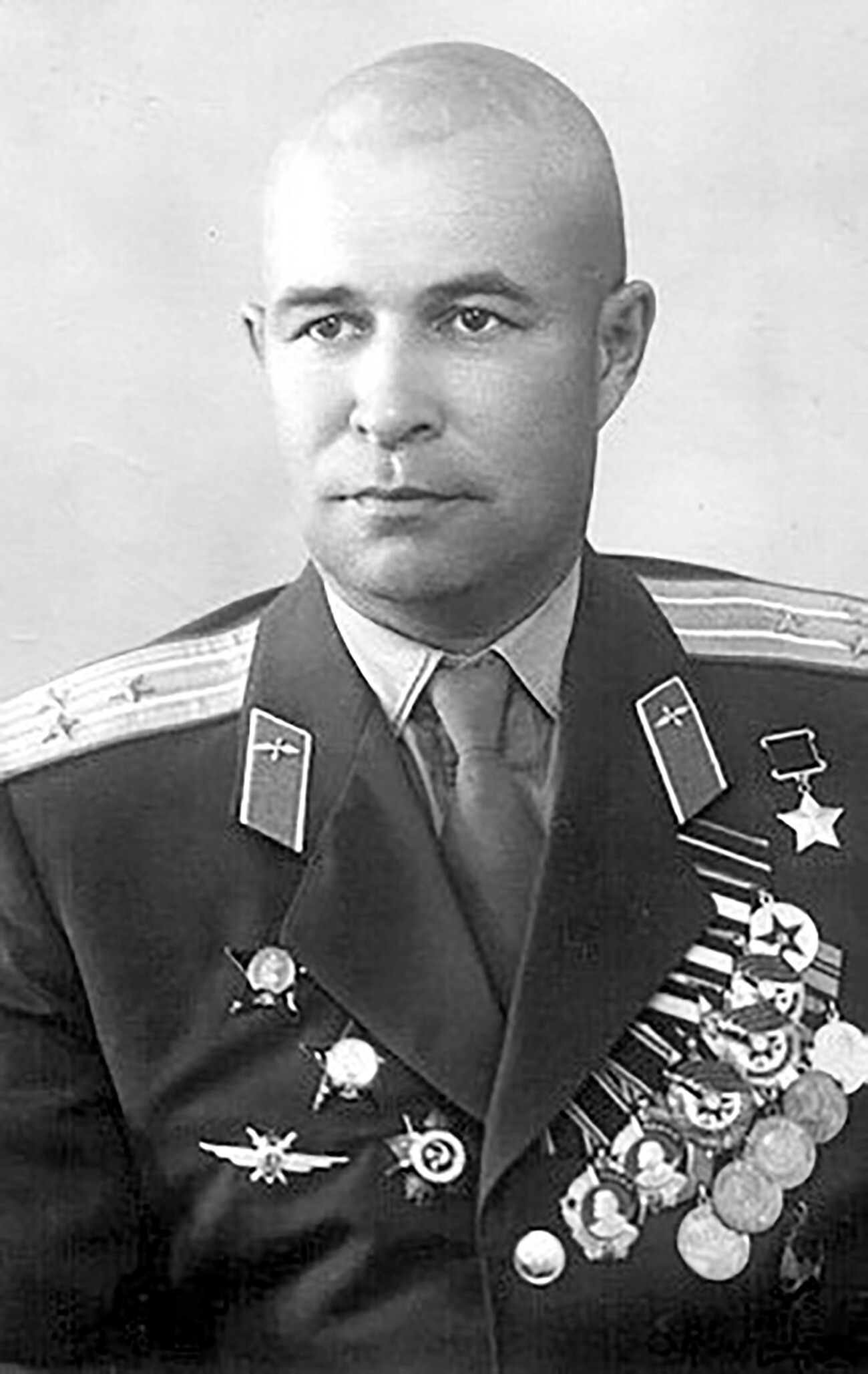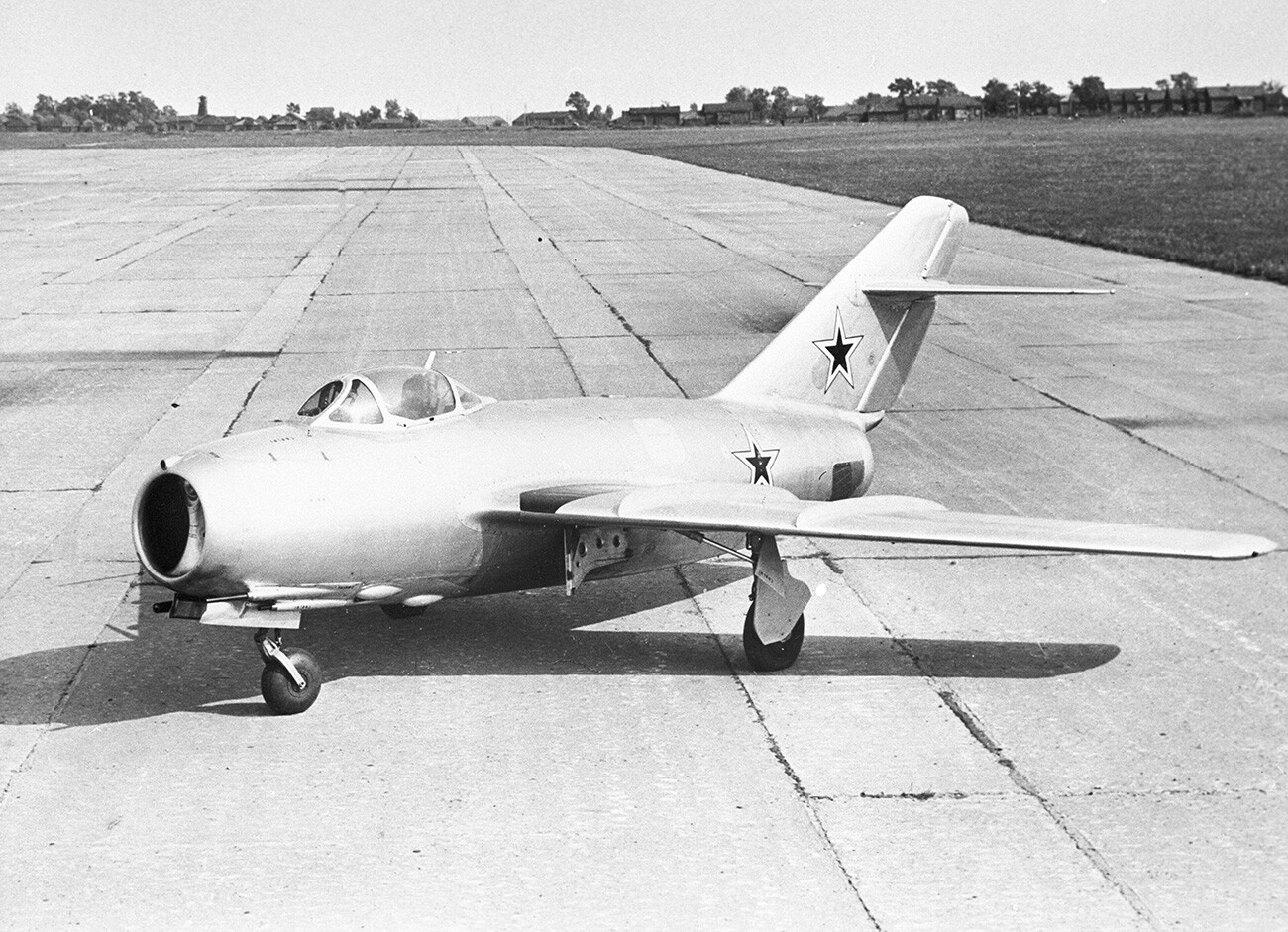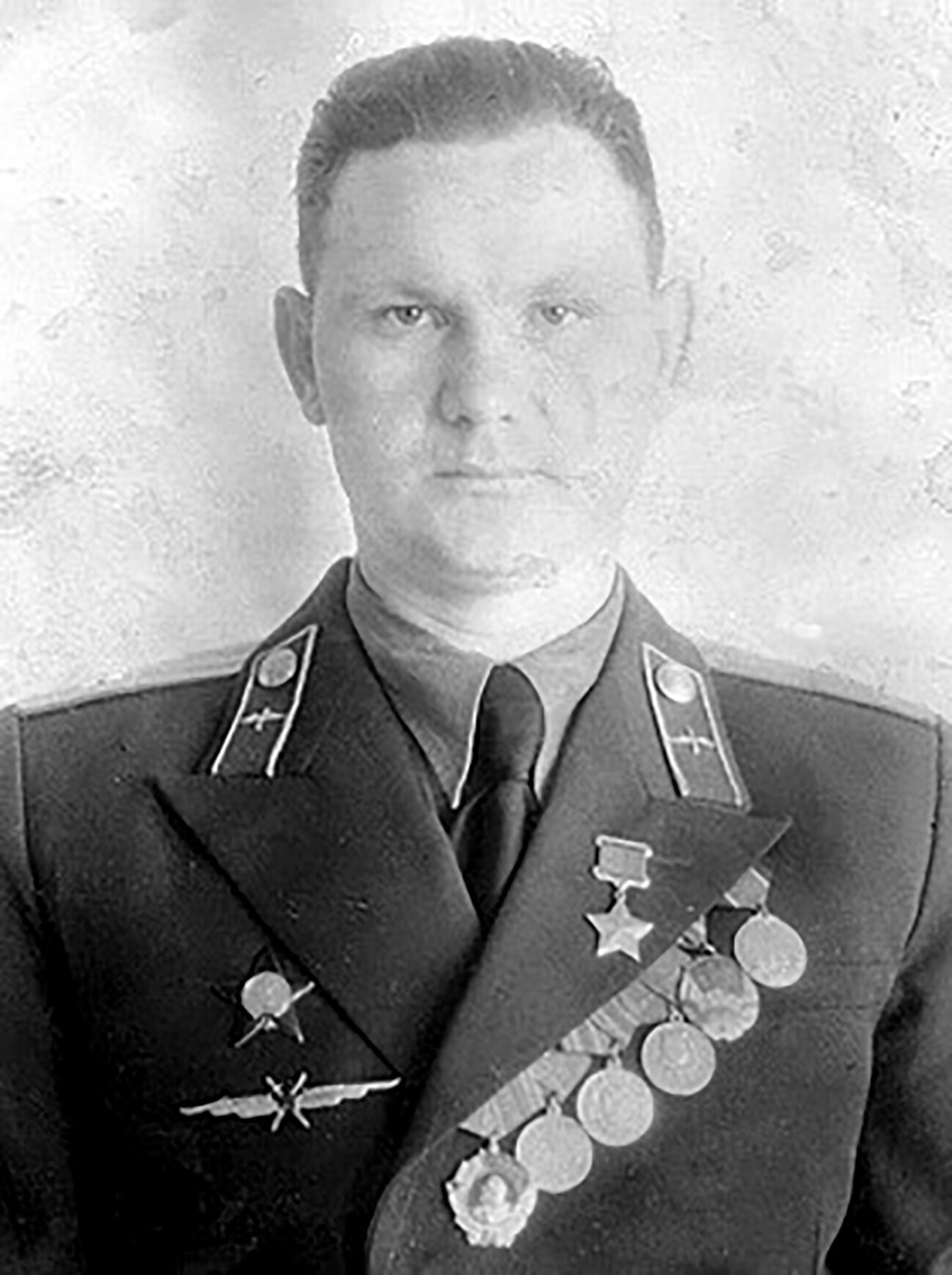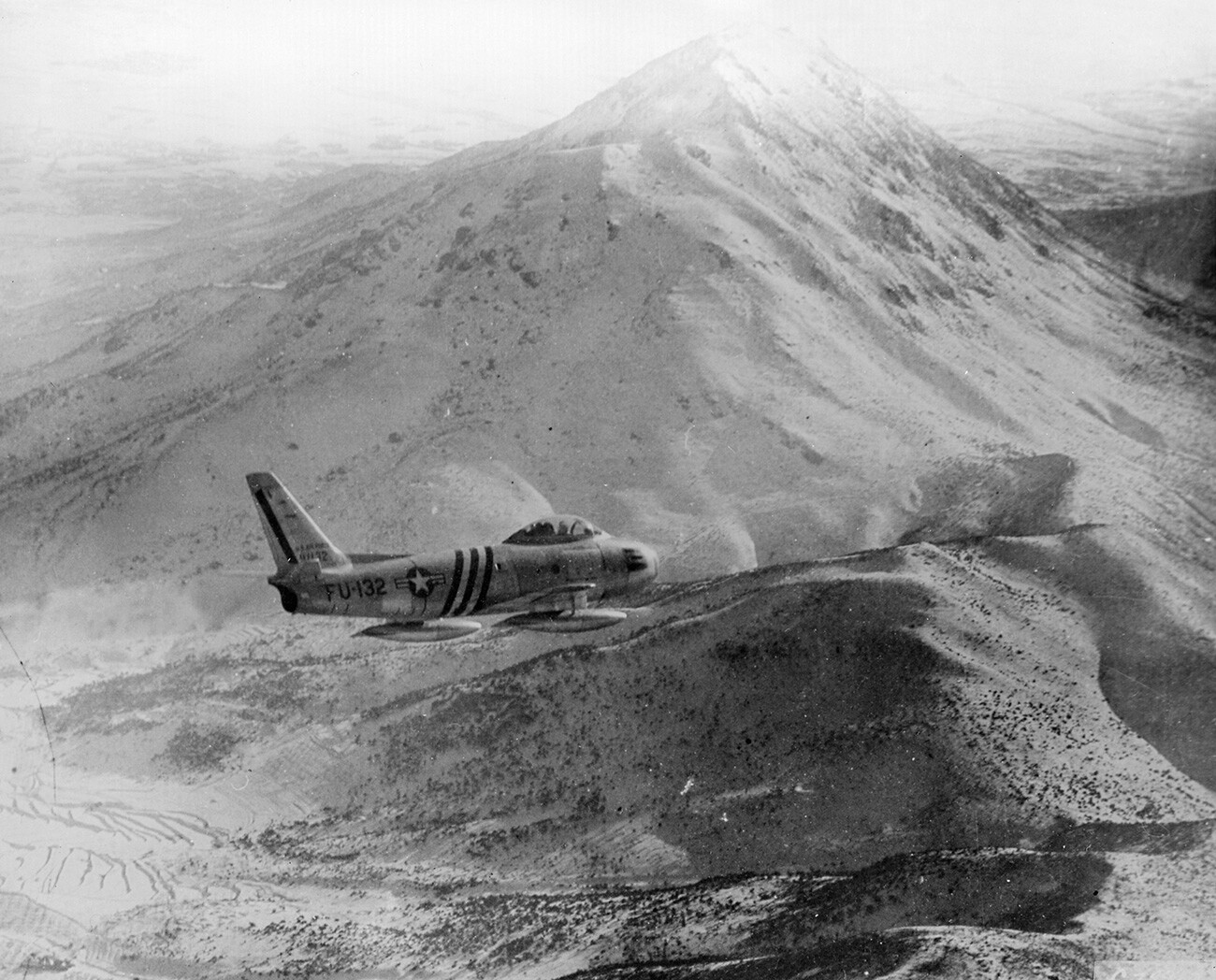
Two Soviet pilots once vied for the title of best ace of the Korean War of 1950-1953. In that conflict, the USSR sided with North Korea, while the U.S. supported the South.
Yevgeny Pepelyaev and Nikolay Sutyagin would leave the American and Korean aces far behind in their wake. However, it is difficult to say which of the two was the better: Sutyagin shot down 22 enemy aircraft, while Pepelyaev, according to various sources, had 20 or 23 aerial victories. Joseph McConnell, the number one American ace, meanwhile, had only 16 downed aircraft to his name.
It is interesting that the future “jet” aces practically did not show themselves in the previous wars against Nazi Germany and Japan. They made dozens of combat sorties, but did not achieve a single aerial victory.
Because of this, they were eager to prove themselves in Korea.

Yevgeny Pepelyaev.
Archive photoHis service began in 1938 in the Far East. After Nazi Germany attacked the USSR, he spent some time at the front, but then returned back.
By the beginning of the Soviet-Japanese War, Pepeliaev had risen to the rank of deputy regiment commander. During that conflict, he made 20 combat sorties, destroying an enemy locomotive and sinking a boat.
During the Korean War, the pilot commanded the 196th Fighter Aviation Regiment as part of the 324th Fighter Aviation Division under the leadership of Ivan Kozhedub, the most effective ace of the anti-Hitler coalition.
“Before our arrival, American pilots, not meeting the necessary resistance in the air, not only shot at cars on the roads, but even hunted individual Koreans or Chinese. In two months, we eliminated their air supremacy. They began to appear only occasionally and did not hang in the sky around the clock,” Pepelyaev recalled.

MiG-15 fighter.
SputnikThe future ace achieved his first aerial victory on May 20, 1951. During a large-scale skirmish involving dozens of aircraft, he flew his MiG-15bis into the tail of one of the American F-86 ‘Sabre’ fighters and brought it down.
After that, the number of victories only began to grow. About five combat sorties, he shot down an aircraft in each, on average, which was considered an excellent result. In just three weeks of November 1951, he destroyed as many as six American fighters.
One of the ‘Sabres’ shot down by Pepelyaev landed on its belly on the shore of the Yellow Sea. It was captured and taken to Moscow, where it was carefully studied. “This victory was officially attributed to Major K. Ya. Sheberstov, the pilot of the 176th Guards Aviation Regiment,” he lamented later.
On April 22, 1952, Pepelyaev was awarded the title ‘Hero of the Soviet Union’. At the same time, Kozhedub nominated him for the title of twice Hero. “However, upon arrival from Korea, the 324th Air Division was transferred from the Air Force to the country's Air Defense. The Air Defense Command, protecting its ambitions, put all these documents under the rug…” the ace recalled.

Nikolay Sutyagin.
Archive photoLike his famous colleague, Nikolai Sutyagin served in the Far East for almost the entire World War II. During the armed conflict against Japan, he made 13 combat sorties, mostly reconnaissance of enemy airfields.
During the Korean War, the pilot served in the 17th Fighter Aviation Regiment of the 303rd Fighter Aviation Division. It was he who opened the combat account of his air regiment, shooting down a ‘Sabre’ on June 19, 1951.
Sutyagin and his partner then set off in pursuit of a pair of American fighters. They tried to break away, diving and maneuvering, but the Soviet pilots did not lag behind, inexorably reducing the distance.

F-86 ‘Sabre’ fighter.
Public Domain“Having released the brakes, we went after the F-86 at an angle of 70-75° towards the sea, where our pursuers were trying to go. Having approached to a distance of 150-200 meters, I opened fire on the wingman ‘Sabre’ and shot it down," the pilot recalled.
In a little over a month, Sutyagin shot down four more enemy aircraft, becoming an ace of his air division. In October 1951, he was awarded the title ‘Hero of the Soviet Union’.
Sutyagin was recalled home in 1952. He returned to Asia for the next time in 1970 as the chief military adviser on aviation in the Democratic Republic of Vietnam. The Soviet ace then provided great assistance to the North Vietnamese Air Force in their fight against their U.S. counterparts.
If using any of Russia Beyond's content, partly or in full, always provide an active hyperlink to the original material.
Subscribe
to our newsletter!
Get the week's best stories straight to your inbox